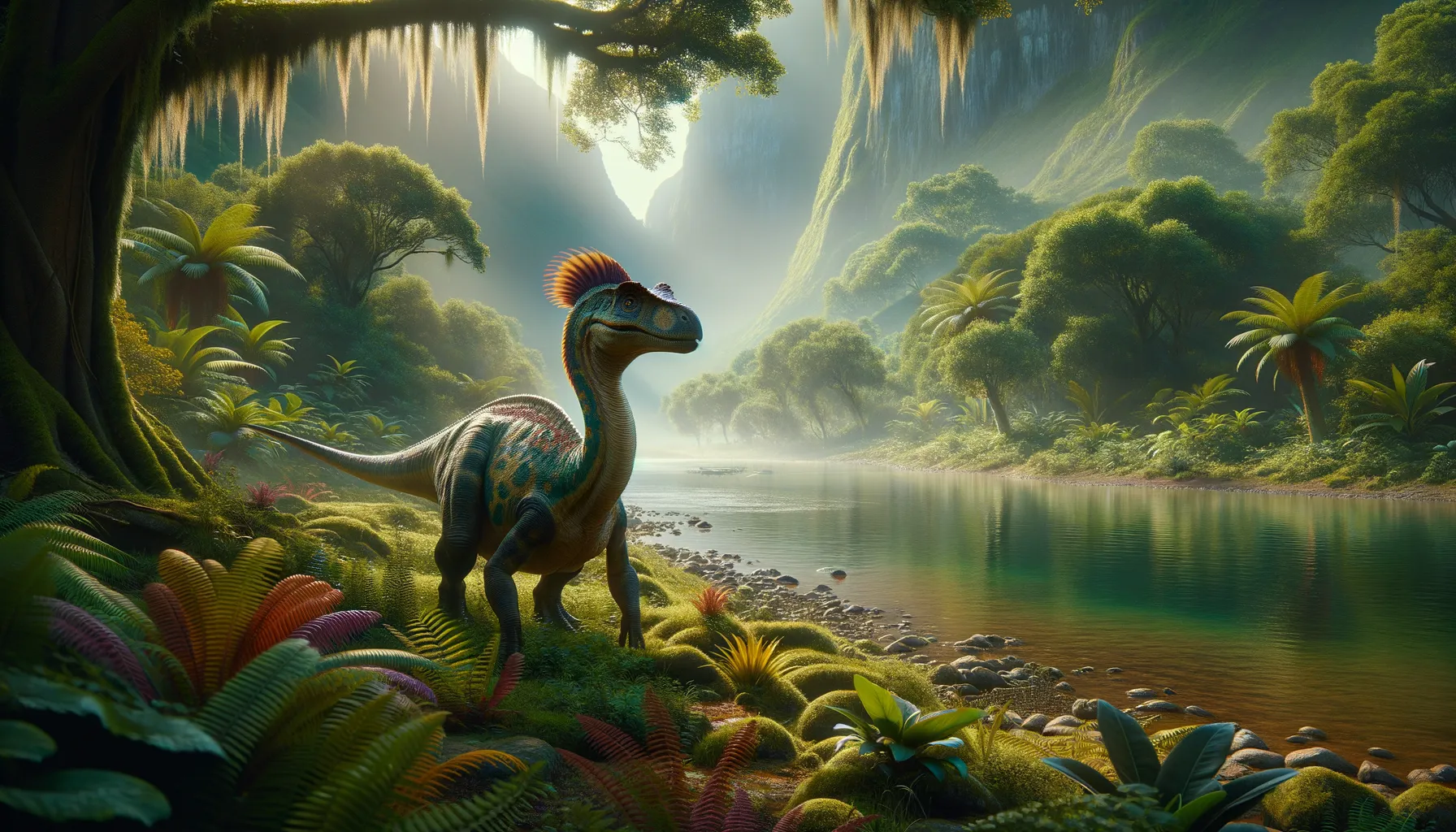
Kazaklambia
Graceful grazer from the age of giants.
Period
Cretaceous
Length
Roughly 8 meters long.
Height
Approximately 2 meters at the hip.
Weight
Around 1,000 kilograms.
Kazaklambia, a duck-billed dinosaur, thrived during the Late Cretaceous period. Known for its unique head crest, it was herbivorous, feeding on the rich vegetation of the riversides it inhabited. This dinosaur belonged to the Hadrosauridae family and shared its environment with a diverse array of plant-eating and carnivorous dinosaurs. Its remains have helped scientists understand more about dinosaur evolution and their ecosystems.
Diet
Kazaklambia primarily fed on plants, including leaves, twigs, and possibly fruits. Its duck-bill structure suggests it was adapted to browsing for vegetation around water sources.
Hunting
As a herbivore, it did not engage in hunting. Instead, it likely foraged for food in groups, which reduced the risk of predation.
Environmental challenges
Kazaklambia faced numerous environmental challenges, including volcanic activity and shifts in climate that altered its habitat. Predators were also a constant threat, as species like theropods roamed the same regions. Seasonal changes might have influenced food availability, impacting their diet and movement patterns. Additionally, competition with other herbivores would have been a factor in their survival.
Speed
Moderate, typical for medium-sized herbivores.
Lifespan
Estimated between 20 to 30 years.
First discovery
Kazaklambia was first described in 1968.
Fun Facts
- Kazaklambia was a dinosaur that lived about 90 million years ago during the Late Cretaceous period.
- It is a member of the Hadrosauridae family, which are commonly known as duck-billed dinosaurs.
- Fossils of Kazaklambia were first discovered in Kazakhstan, which is where it gets its name from.
- Kazaklambia was a herbivore, meaning it primarily fed on plants.
- Even though it was a large dinosaur, Kazaklambia likely lived in herds for protection and social interaction.
- Its duck-bill helped Kazaklambia to easily strip leaves and needles from plants, which formed a significant part of its diet.
- Kazaklambia is thought to have been a transitionary species in the evolution of more advanced hadrosaurs.
Growth and Development
Kazaklambia likely underwent rapid growth, typical of dinosaurs, reaching maturity quickly to avoid predation. Juveniles may have grown faster during periods of abundant resources. Its development included the formation of a distinctive crest, which might have been used for species recognition or mating displays. This growth pattern was crucial for adapting to its environment and ensuring continuation of the species.
Habitat
Kazaklambia's habitat consisted of lush river valleys and floodplains, which were abundant with ferns, conifers, and flowering plants. These areas provided ample food and water resources crucial for their survival. The wet and fertile environment also supported a variety of other dinosaur species, creating a complex ecosystem. Additionally, these regions offered shelter from predators and provided ideal conditions for nest building and raising young.
Interaction with other species
Kazaklambia interacted with other plant-eating dinos, often sharing grazing grounds. It likely lived in groups, offering protection against predators like tyrannosaurs. Competitions with other herbivore groups for food sources might have occurred, influencing its migratory patterns. It also coexisted with smaller creatures and reptilian species, adding to the complex ecosystem dynamics of its time.
Natural lifespan
It had a natural lifespan that ranged from 20 to 30 years.
Reproduction
Kazaklambia reproduced by laying eggs in nests, likely built on soft ground near water. Females might have cared for the young until they could fend for themselves. Hatchlings were probably vulnerable and stayed in groups for protection. Breeding behavior might have included displays or calls, facilitated by the crest structure.
Social behaviour
Living in herds provided Kazaklambia with protection from predators. Social hierarchies may have existed within these groups, dictated by age or size. Young dinosaurs learned social skills and survival tactics from elder members. Its vocalizations, alongside visual signals, played a part in maintaining social harmony and coordinating group movements.
Fossil locations
Fossils of Kazaklambia have primarily been found in Kazakhstan. These discoveries have been crucial in understanding its lifestyle and adaptations. The remains provide insights into the paleoenvironment of Central Asia during the Cretaceous. Ongoing excavations continue to unearth more about its life and ecosystem.
